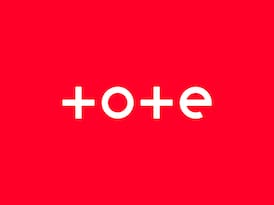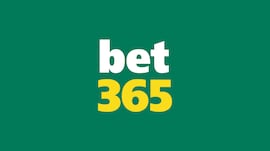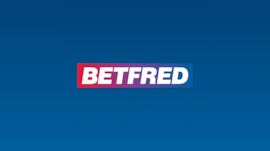Horse racing and betting go hand-in-hand. There’s nothing quite like the thrill of winning big from the bookies having followed your hunch and had a bet on a horse race.
The rise of online betting has made it much easier to bet on the horses but it is no modern phenomenon. People have been having wagers on horse racing ever since the sport’s foundation hundreds of years ago.
There are a huge number of factors that go into picking a winning bet on any horse race. As well as understanding form, being able to read a race card and keeping an eye on the conditions, it is imperative to understand how betting odds work in horse racing.
That’s where this guide comes in. We have broken down the way that horse racing betting odds work, the way they are presented by the bookies and what to be aware of in your quest to win big.
Betting Odds – An Explanation
Before delving into the specifics of horse racing betting, let’s start with an overview of what betting odds are and how they work.
At their most basic, betting odds reflect the chance of something happening – in other words, the implied probability. When it comes to horse racing, the odds set by a bookmaker on a horse reflect their view of how likely that horse is to win the race.
In practice, it’s not that simple.
Firstly, bookmakers are there to make a profit. For that reason, the total implied probability of all horses winning a specific race never adds up to 100% as the bookies have an in-built profit margin known as the overround.
Then there’s the need for bookmakers to manage their positions, changing the odds subject to the way that punters bet.
Finally, it’s important to remember that setting the odds is ultimately subjective. The bookies’ job is to make sure that they toe the line between making a profit and offering odds that are tempting enough for punters to have a bet. A punter’s job is to seek out betting value, where a horse has a better chance of winning than their odds suggest.
How do Fractional Odds Work in Horse Racing?
In Britain there are two main ways that horse racing betting odds are displayed – fractional and decimal.
Fractional odds are the traditional method used by the bookmakers. As the name suggests, the odds are displayed in the form of a fraction. Take 3/1 as an example. If a bookmaker offers odds of 3/1 on a horse to win a race, they are suggesting that if the race is run four times, the horse will win once and fail to win three times.
The other way of looking at fractional odds is that they reflect how much you stand to win from a bet. The number on the right (the denominator) reflects your stake with the number of the left (the numerator) reflecting your profit. So, if you place a £10 bet on a horse at 3/1 and it wins the bookmakers will give you £40 (£30 profit plus your £10 stake).
You can work out the implied probability of a horse winning from their fractional odds using the following formula –
denominator / (denominator + numerator) = implied probability
In the example of 3/1 that works out like this –
1 / (3+1) = 0.25 or 25%
How do Decimal Horse Racing Odds Work?
If you watch horse racing coverage on TV or read any of the mainstream coverage you’ll see fractional odds mentioned. They are part and parcel of horse racing but a key of the strength of online betting is making it as easy as possible for punters. Part of that is the use of decimal odds which has grown in popularity considerably in more recent years.
Take our example of a horse available at 3/1. If you click the toggle bar on a bookmaker’s website from fractional to decimal you’ll see that horse available at 4.0.
Decimal odds arguably make the amount you stand to win from a bet even clearer than fractional odds. A £10 bet on a horse to win a race at 4.0 would see a total return of £40 (£30 profit plus the return of your £10 stakes).
Working out the implied probability from decimal odds is also easier than with fractional odds. Simply use the following formula –
(1 / decimal odds) = implied probability
For odds of 4.0 that works out like this –
(1 / 4) = 0.25 or 25%
How Do the Bookies Set Their Odds?
Now that you know how to work out the implied probability of a horse winning a race you can do it in reverse – starting with your view on the probability of a horse winning a race, working out the odds and then comparing them with the odds being offered by a bookmaker.
If the bookmaker’s implied probability is smaller than odds (therefore the odds are larger) it’s time to place the bet.
The problem with working out what chance a horse has of winning a race is that it is entirely subjective. Many, many people have tried to come up with foolproof rating systems for horse racing but in truth, no such thing exists.
The good news is that it is the same for the bookmakers. They have odds compilers, software to manage liabilities and an overview of the way the market sees things but ultimately the horse racing odds you see are subjective.
Really, that cuts to the essence of the joy of horse racing. The lack of a magical formula to either set odds or work out whether they reflect good value or not is part of the appeal. Horse racing betting odds without the sport’s unpredictability just wouldn’t be as appealing.
Keep an Eye on the Odds Movement
It’s not just the horse races that can be unpredictable. That often applies to the betting odds as well.
When it comes to the biggest horse races, the bookmakers will price up markets weeks and sometimes even months before the race is due to take place. These long term betting markets are collectively known as ante post betting.
As many of the selections in an ante post betting market won’t actually take place in the race (ie another layer of unpredictability) the odds available are bigger than those you’ll get on the day of the race. Many punters love taking advantage of these bigger prices offered by ante post betting.
The ante post odds will often shift considerably over time. We’ve seen many outsiders for a big race win a warm-up race in eye-catching style. This forces the bookmakers to change the odds they’re offering or see savvy punters swoop in to take the value.
The odds can also move considerably on the day of a race. Watch the coverage of any horse racing meeting and you’ll hear the broadcasters talking about a major gamble. This is when a horse is being backed by a large number of punters so that their price gets considerably shorter.
Horse racing betting odds are notorious for these gambles. Even without a major gamble, the odds are subject to fairly significant shifts over time. It is vital to understand this element of horse racing betting in order to best take advantage of the odds provided by the bookies.









